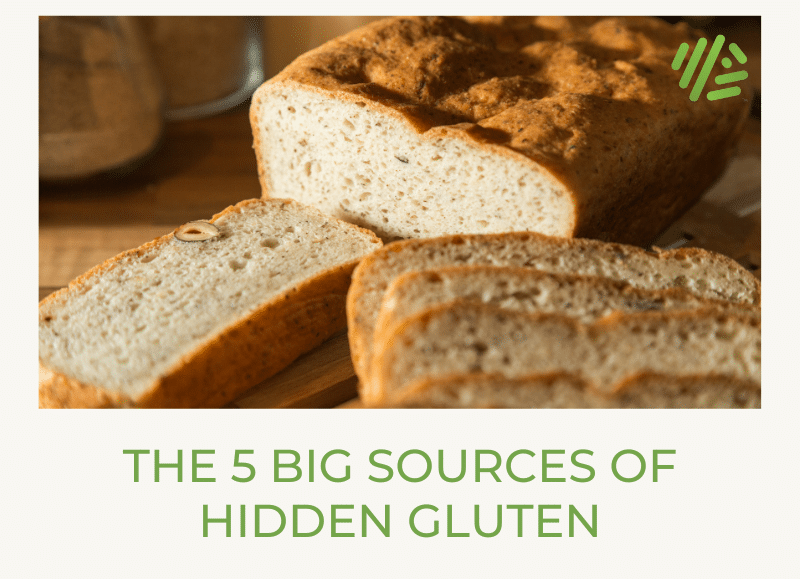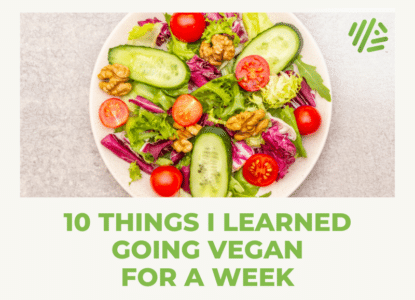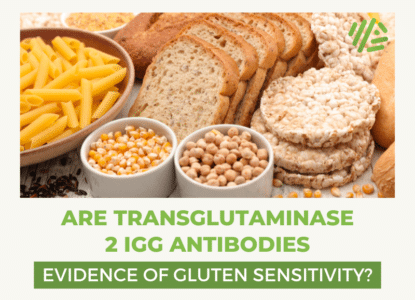Does Everyone Need to be on a Gluten-Free Diet?
Article at a Glance
- Patients diagnosed with celiac disease must strictly avoid gluten, as even trace amounts can damage their small intestine.
- Avoiding all gluten is difficult due to frequency of cross contamination, where trace amounts of gluten make their way into “gluten free” foods, especially in restaurants.

Contents
Gluten is a protein found in wheat, barley, and rye.
Celiac disease is an autoimmune condition marked by an inability to eat even trace amounts of gluten.
- In celiac sufferers tiny doses of gluten, regardless of how harmless they may seem, can actually damage the lining of the small intestine, leading to a whole host of symptoms, such as poor digestion, anxiety, fatigue, weight loss and more.
- Increased damage from gluten to the small intestine can result in poor nutrient absorption for those with the disease.
- Celiac sufferers must be vigilant in avoiding all gluten, even from foods that are believed to be “gluten-free” such as corn tortillas. While it’s true that corn tortillas are naturally gluten free, they are often fried in the same oil that has been used to fry breaded foods or desserts, and as such those with celiac have to strictly avoid these sources of “cross-contamination.”
- We know that those with celiac disease show an immune response to the gliadin protein in wheat, with the body responding by generating gliadin antibodies. The downstream impact is the destruction of the villi of the small intestine and resulting poor absorption of nutrients.
The gluten free-diet is the prescribed solution.
But here’s the problem: it has been estimated that in about 30% of individuals, going on a gluten-free diet doesn’t heal the damage to the small intestine. A gluten free diet seems to place celiac patients in remission, but does not help to rebuild the “villous architecture” of the small intestine.
Now, this could be because of how easy it is to be exposed unintentionally to gluten
Many people who follow gluten-free diets are getting “glutened” without knowing it.
In this post, I will walk you through 5 common hidden sources of gluten and how to avoid them.
Should Everyone Avoid Gluten?
We know for sure that those with celiac disease should.
The damage caused by a wheat intolerance may be tough to spot.
Celiac is a “delayed hypersensitivity reaction. Reactions to gluten, when they occur, are often delayed for 48-72 hours after eating wheat, barley, or rye, so it can be hard for people to pinpoint gluten as the culprit behind problems that pop up well after eating that delicious almond croissant (or maybe a couple of them).
Whether you are avoiding wheat because of a celiac diagnosis, or due to a sensitivity, going strict gluten-free requires more work than you may think.
There are hidden sources of gluten in many gluten free dishes.
#1. Fried Foods
Many corn and taco dishes have gluten, which leads me to my first source of hidden gluten: corn chips and fried foods. Corn chips are almost always fried. If the chip is fried in the same oil used for frying breaded food, it’s not gluten-free.
Hash browns at MacDonald’s are not gluten-free under this logic (it’s the best example of fried food I could come up with). But the handmade blue corn tortilla offered for the guacamole at my local spot wasn’t gluten-free either since it was fried in the same oil as the churros, a breaded dessert.
The lesson here is to have a sharp eye for anything fried, as it will usually contain gluten.
#2. Sushi
Staying gluten-free at sushi restaurants takes more than just ordering Tamari, which is gluten-free soy sauce. The soy, teriyaki, and fish sauces used in many sushi dishes have gluten, as does wasabi. Ikura, or salmon roe, one of my favorite dishes, is usually premixed in soy sauce and often cannot be made gluten-free. Many sushi restaurants also use vinegar with trace amounts of gluten in their sushi rice, which means even the rice isn’t gluten-free. This practice will vary by restaurant.
It’s also worth noting that soba noodles, made of buckwheat, often contain half wheat and half buckwheat, and are therefore not gluten-free. This brand of soba uses 100% buckwheat if you’re looking for a good clean soba option.
Wasabi often contains gluten
Hate to be the bearer of bad news, but many types of wasabi are not gluten-free, they use wheat starch as a thickening agent.
If your mission is total avoidance of gluten, call ahead and ask about wasabi, whether vinegar in the rice has gluten, and whether there are “pure” gluten-free options available.
#3. Condiments
This is a big one. In the grocery store, it’s relatively easy to read the label and determine whether a product is laced with gluten, but in restaurants this may prove to be a more difficult task.
In addition to soy sauce and fish sauces, other condiments such as ketchup and certain salad dressings are sometimes thickened with gluten.
#4. Bakeries and Pizzaries
Many pizza spots proudly advertise “gluten-free” dough on a chalkboard in front of the restaurant, However, dig a little further and you find this message on the footer of their website in very tiny print:
_____ pizza advises against gluten-free dough for extreme gluten intolerances; cross-contamination may occur.
Now, to be clear, these guys aren’t doing anything wrong. They make pizza dough and pizza dough is made with wheat flour. No surprise that there will be cross contamination between the gluten pizza and the gluten-free pizza dough. Having said that, if you have celiac, gluten-free pizza should be made in a dedicated gluten-free facility.
The same principle applies to any bakery that prepares food with wheat, cross contamination will be present.
#5. Processed Foods
The first version of the Impossible Burger contained gluten.
In fact, there is always the risk for gluten in any processed food, including hot dogs.
A Note on Coffee
I think many of us will be shocked to see instant coffee appear as a cross reactive food with gliadin.
The cross reactivity study authors explain the large reaction with instant coffee as due to the fact that instant coffees appear to commonly be contaminated with small amounts of gluten.
Higher quality whole bean coffee is thought to be safe as long as the individual is not allergic to coffee, which apparently is somewhat common.
Bottom line: drink good coffee and use a milk alternative if you’re sensitive.
Key Takeaways
Am I convinced that everyone has to take such extreme measures to avoid gluten?
No.
If you have celiac disease or gluten sensitivity, it may pay dividends to explore a lifestyle where you are careful to avoid foods with trace amounts of gluten as well as some of the foods that are cross reactive when you notice issues.
Everyone will have to experiment for themselves.
Bottom line; for some people, going a bit beyond just gluten-free will be a necessary step to feel their best.
If you enjoyed this post, you might also like my piece on Low FODMAP diets and IBD.



